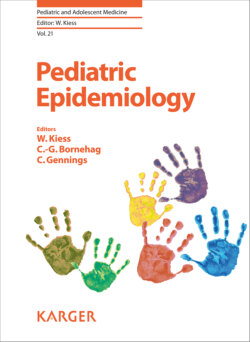Читать книгу Pediatric Epidemiology - Группа авторов - Страница 20
На сайте Литреса книга снята с продажи.
Introduction
ОглавлениеSince the modern re-discovery of child maltreatment, boosted by the sentinel papers of Henry Kempe et al. [1] in the 1960s, our knowledge about this worldwide problem has increased substantially through epidemiological surveys and qualitative research. We have got a fair understanding about the extent of the phenomenon as well as trends, at least in industrialized countries [2, 3]. We also have quite firm knowledge about the devastating impact on children’s health and development, with adverse psychological, somatic and social consequences that affect childhood and that has long-lasting effects into adulthood and old age [2]. There is also a widespread agreement that in order to make progress in the prevention and reduction of child maltreatment, it is important for policy-makers to be informed about its scope and characteristics. Policy-makers also need knowledge about whether information about maltreated children is reaching the attention of school teachers, hospital staff, police departments and social services or alternative agencies that are in the position to help and respond. As policy-makers make changes, provide training and raise awareness, they also want to know if their reforms are changing the patterns they originally observed [4].
The prevalence in different countries and within different groups of children and families has been difficult both to estimate and to compare, as noted in the WHO report on child maltreatment in the world from 2006 [5]. Reasons for this wide variation in incidence and prevalence include differences in how maltreatment is defined, varying quality of the sources used, non-uniform construction of surveys and validity problems. Research on child maltreatment also has some specific difficulties compared to many other areas of epidemiological research, as the perpetrators seldom will acknowledge their actions even in anonymous surveys and some victims cannot describe what has happened due to exposure at an early age, severe brain injuries or reluctance to disclose violence from perpetrators on whom they are dependent. A large part of the variation in prevalence remains unexplained and some might be due to methodological artefacts. There is a need to strive towards common and operational definitions of maltreatment and to work with representative samples.
